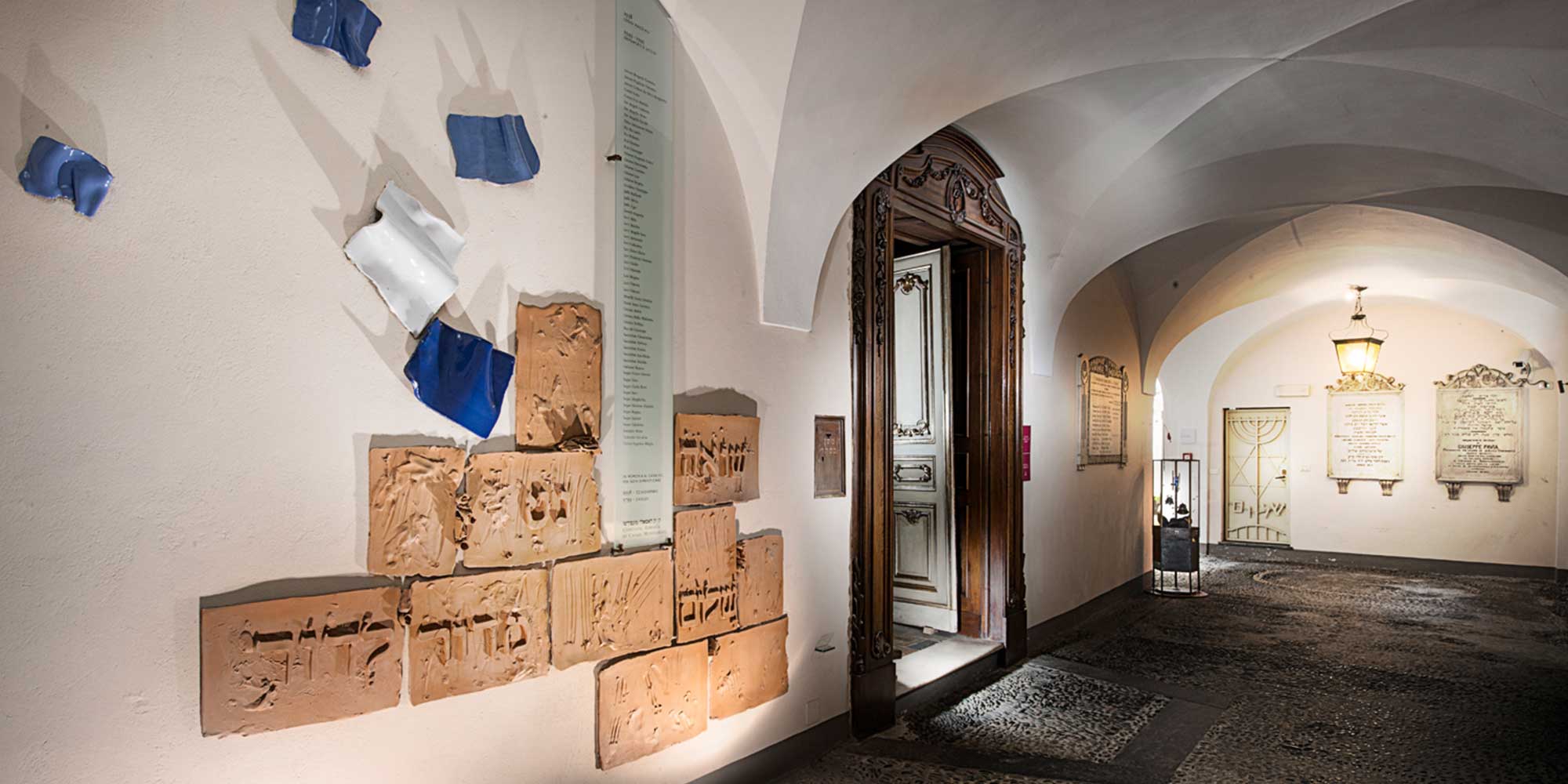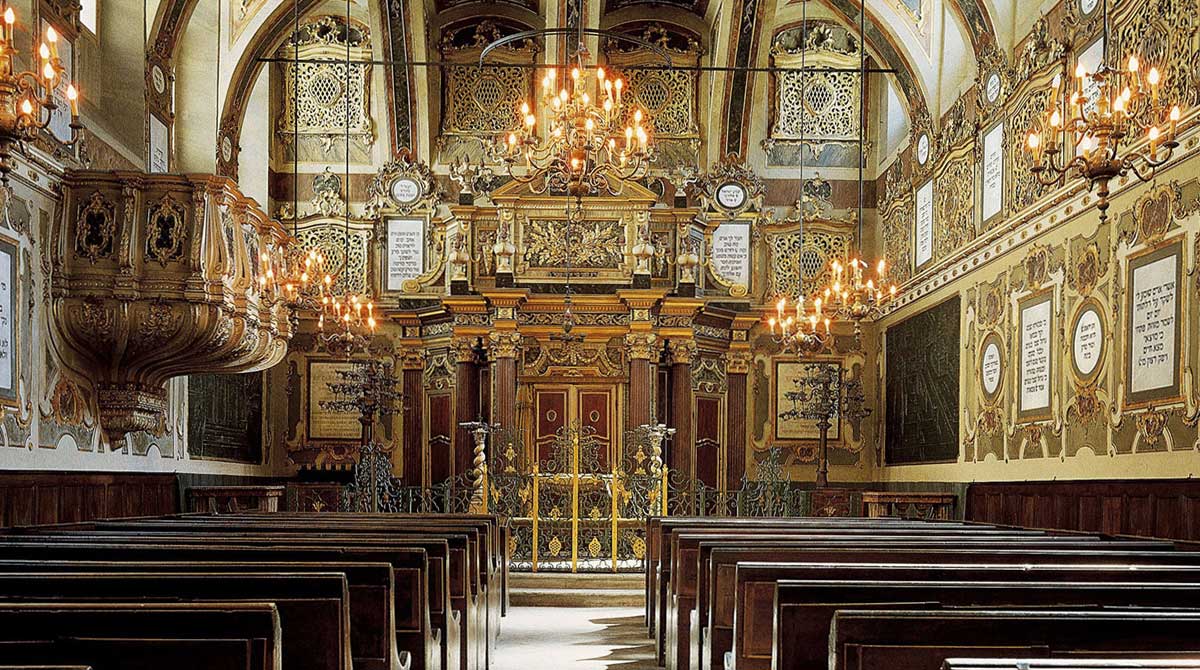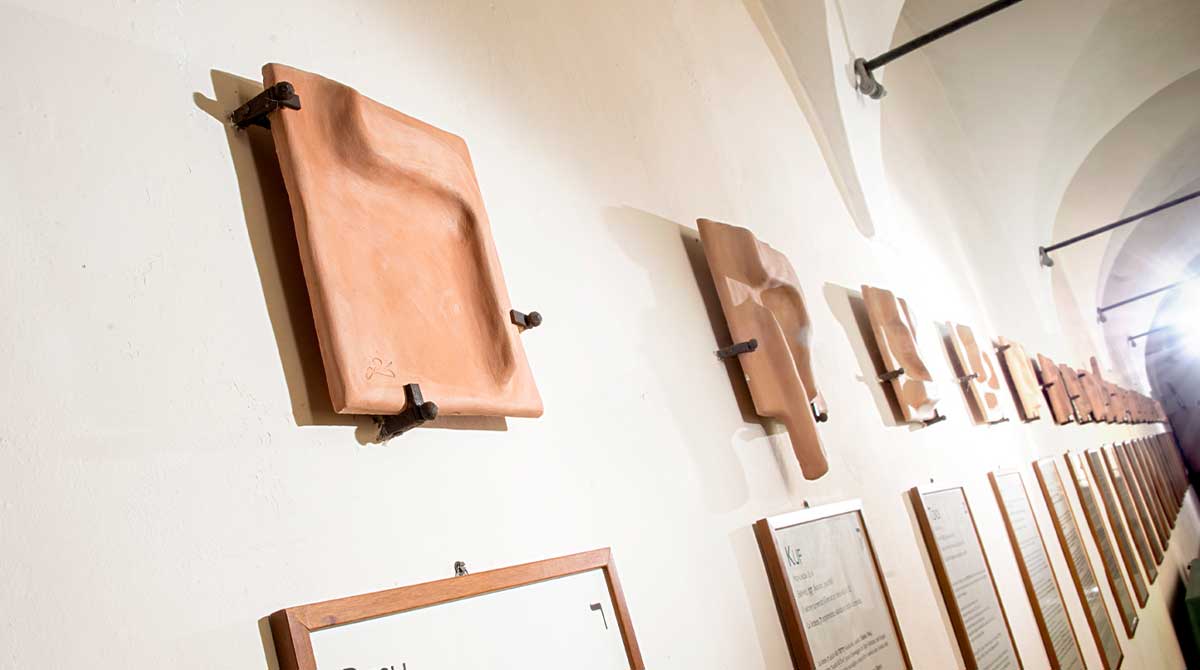An intimate place of great spirituality
The anonymous entrance door of Vicolo Salomone Olper gives access to a welcoming, familiar, airy, and intimate place of great spirituality. It is the entrance to the synagogue, where there are several plaques commemorating events and influential figures of the Jewish Community of Casale Monferrato. Here, in the place where the Jews of Casale used to enter the synagogue, there is a work of great historical importance: the Shoah Memorial by Antonio Recalcati.
The sculpture is attached to the wall, occupies a volume of approximately 3 by 3 meters, and is intended to visually recall the Kotel, the Western Wall of the ancient Temple in Jerusalem. It is composed of rectangular terracotta blocks, terracotta slabs glazed from white to blue, and a tall and long opaque glass panel engraved with the names of the 59 Jews born in Casale Monferrato and the 4 Jews born in Moncalvo who were deported and died in the Nazi extermination camps. There are two dates at the top: 1938, the year the racial laws were enacted in Fascist Italy, and 1943-1945, the years of the deportations.
The terracotta elements symbolize the stone blocks used to build the Kotel, the Western Wall of the Temple in Jerusalem (often mistakenly called the “Wailing Wall”), which is the heart of the Jewish people’s spirituality. Many leave notes with prayers or personal wishes between the cracks of the stones. In the sculpture, these sheets are in terracotta between some blocks, but the white light blue also represents them, and blue ceramic elements are placed at the top on the left side of the sculpture. Recalcati wanted to represent, in an artistic synthesis, both the immobility of the stones and the movement of the leaves, which seem to rise in flight from the wall towards the sky, in a symbol that embodies the need for the immanence of memory and the raising of the tension towards God.
On the terracotta blocks, letters appear in relief that form the Hebrew words Shalom (peace), Shoah (Holocaust), and Midor le Dor (“from generation to generation”). These are meaningful words that evoke memory but also the desire for peace.





